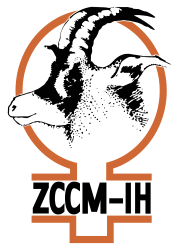In a bid to improve public understanding of mining taxation, and promote informed comment, the Chamber of Mines today released a report entitled “A guide to understanding Mineral Royalty Tax (MRT)”.
The short, 15-page report is available for download here>>> Guide to Mineral Royalty Tax (ZCM) – Medium Resolution (1)
Commenting on the release of the report, Chamber of Mines president Nathan Chishimba said: “We have recently commended the Government for annoucing the introduction of a sliding scale system for the determination of MRT rates, linked to the prevailing copper price. In order for the public to really appreciate the significance of this move, we believe the whole subject of mining taxation, and MRT in particular, needs to be better explained.
In recent years, MRT has been a hot topic. We wish to set out the cold facts, to give Zambians an understanding of a critical issue affecting the mining industry, and the wider context of taxation and investment in which the issue is situated.”
He added: “The publication of this report signals a more proactive approach by the industry in educating the public about important strategic issues. It is a natural follow-up to the media conference we held in December last year to explain the current crisis facing the global copper-mining sector. In the weeks and months ahead, there will be more such initiatives as the industry continues to engage constructively with stakeholders and the broader public.”
“A guide to understanding Mineral Royalty Tax (MRT)” has been designed to be accessible to a lay audience, and deals with the subject broadly rather than in complex detail. It covers the present situation in Zambia, explains the motivations and mechanics of MRT, and gives an outside view of our mining-tax system by the IMF and World Bank, and ends with some thoughts on the future of the mining industry.
Among the key learning points of the report are the following:
- Unlike normal company tax, MRT is levied on revenues rather than profits; it is therefore payable even when mines are marginal or loss-making.
- Mines can take several years to become profitable and pay profit-based tax, so MRT is an effective way for governments to get upfront short-term tax revenue;
- MRT is used by many countries around the world, and always exists alongside a tax on profit – together, the two taxes assure a stable flow of tax revenue throughout the life cycle of a mine.
- Unlike a profits-based tax, MRT is a cost to the business. A rate that is too high can therefore stifle economic activity and employment, discourage further investment, and thus diminish the long-term tax pipeline.
- The report also considers Zambia’s approach to MRT in comparison with other mining jurisdictions.
Source: Zambian Mining Magazine
